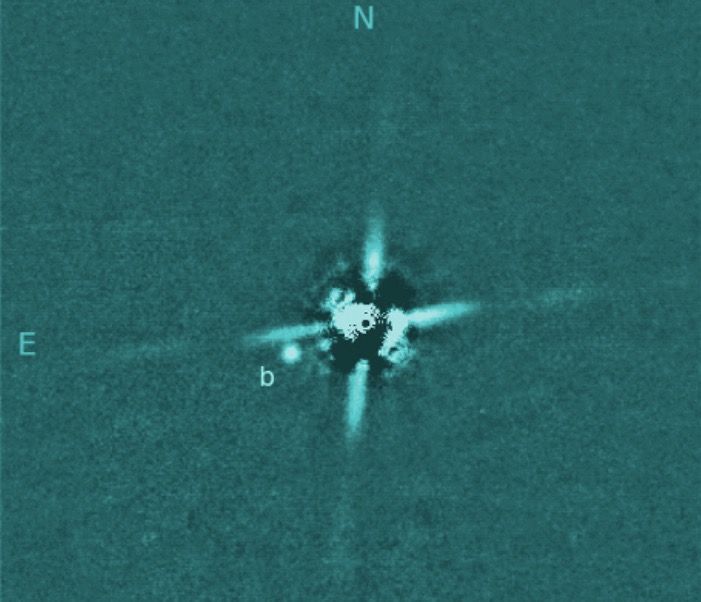
An amazing new image shows one of the youngest alien worlds yet found, giving scientists more clues about how planets form.
The newly discovered exoplanet, known as 2M0437b, is a few times the size of Jupiter and orbits a star 417 light-years from Earth. At just a few million years old, it's far younger than the planets of our own solar system, which formed about 4.5 billion years ago. 2M0437b is so young, in fact, that it's likely as hot as lava, thanks to energy released during its formation, researchers noted.
Scientists discovered 2M0437b using the Subaru Telescope, which captured a stunning image of the planet shining in the reflected light of its star. The 26.9-foot-wide (8.2 meters) Subaru is at the summit of Hawaii's Maunakea volcano and is operated by the National Astronomical Observatory of Japan.
Related: The strangest alien planets (images)
"This serendipitous discovery adds to an elite list of planets that we can directly observe with our telescopes," Eric Gaidos, lead author of a new study announcing the planet's discovery, said in a statement released by the W.M. Keck Observatory, which is also on Maunakea.
"By analyzing the light from this planet," said Gaidos, a professor in the University of Hawaii Mānoa's department of Earth sciences, "we can say something about its composition, and perhaps where and how it formed in a long-vanished disk of gas and dust around its host star."
As Gaidos noted, 2M0437b is special because it's close enough to be directly observed, unlike other worlds that are visible only indirectly — for example, through the gravitational orbital tugs induced on their parent stars.
The planet was first spotted in 2018 using Subaru, by University of Hawaii Institute for Astronomy visiting researcher Teruyuki Hirano, who's a co-author of the new study.
The Keck Observatory's near-infrared camera, working with the Keck II adaptive optics system that compensates for atmospheric turbulence, subsequently confirmed that the planet is indeed orbiting the parent star, at a current distance of about 100 astronomical units. (One astronomical unit is the average Earth-sun distance — about 93 million miles, or 150 million kilometers.)
Related stories:
It took three years to confirm the Subaru observations, as the parent star moves very slowly in Earth's sky, the research team noted.
It's possible that space-based observatories such as NASA's forthcoming James Webb Space Telescope, which is scheduled to launch on Dec. 18, may be able to get more information about 2M0437b, such as the gases in its atmosphere and the potential for a surrounding disk that could form moons, the team added.
The new study has been accepted for publication in the Monthly Notices of the Royal Astronomical Society and is available in preprint format on arXiv.org.
Follow Elizabeth Howell on Twitter @howellspace. Follow us on Twitter @Spacedotcom or Facebook.
"light" - Google News
October 26, 2021 at 06:36PM
https://ift.tt/3jFsNtn
Newfound baby exoplanet photographed from more than 400 light-years away - Space.com
"light" - Google News
https://ift.tt/2Wm8QLw
https://ift.tt/2Stbv5k
Bagikan Berita Ini














0 Response to "Newfound baby exoplanet photographed from more than 400 light-years away - Space.com"
Post a Comment